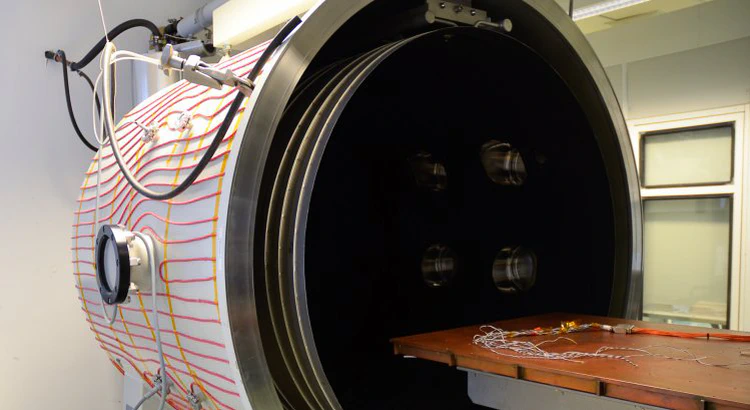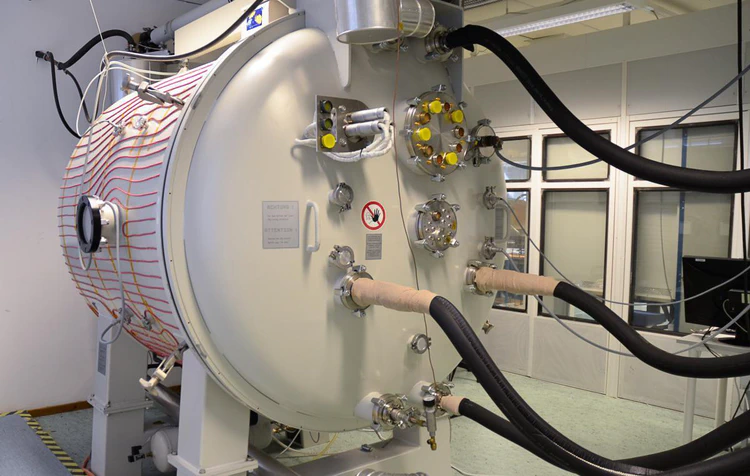
Solar Simulator
Space is a thermally challenging environment as only radiative heat transfer is possible and fast temperature changes due to entering or leaving the eclipse region of a close by body can occur. This leads to thermal stress across all space hardware directly exposed to the Sun with the possibility to accelerated aging or cracks in exposed material. To ensure survival of the space hardware testing in a solar balance chamber like this solar simulator is recommended. This chamber is a thermal vacuum chamber with lamps with adjustable power simulating the solar spectrum with the highest possible accuracy.
This chamber can be used as a standalone thermal vacuum chamber for exceptionally large items which do not fit into our micro thermal vacuum system or TVC025 thermal vacuum system.
Technical specifications
- Dimensions Chamber (inside)
- $1230 mm$ diameter, $1300 mm$ length
- Pressure
- <$10^{-6} mbar$
- Temperature
- Oil temperature control system ($-45°C$ to $+90°C$ nominal) for table and shrouds.
- $N_2$ cooling (down to $-160°C$) for shrouds. Temperature gradient $~1°C/minute$
- Logging
- PT100, $24$ channels, of which $11$ are available for the device under test
- Vacuum Flanges
- $3$ DN 40 ISO-KF
- $2$ DN 100 ISO-K
- $1$ DN 160 ISO-K
- $1$ DN 250 ISO-K
- $2$ flanges for thermal system (DN 40 ISO-KF)
- $6$ flanges for thermal system (DN 100 ISO-K)
- $1$ window (DN 160 ISO-K)
- $4$ lamps (DN 250 ISO-K)
- Vacuum Feed Throughs
- List of possible connectors available on request
- Dimensions Mounting Plate
- $700 mm$ width, $1200 mm$ length
- Material Mounting Plate
- Copper
- Pattern Mounting Plate
- M5 holes with $76 mm$ center to center
- Shroud
- Black shroud with $N_2$ cooling
- Optional Equipment
- Residual gas analyzer
- Lamps
- 4x Metal halide of type Philips MSR 575 HR
- Illumination Area
- $400$ x $400 mm$ area: $1-1350 W/m^2$
- $500$ x $500 mm$ area: $0-310 W/m^2$ |

Photos: Annelie Klint Nilsson, IRF
